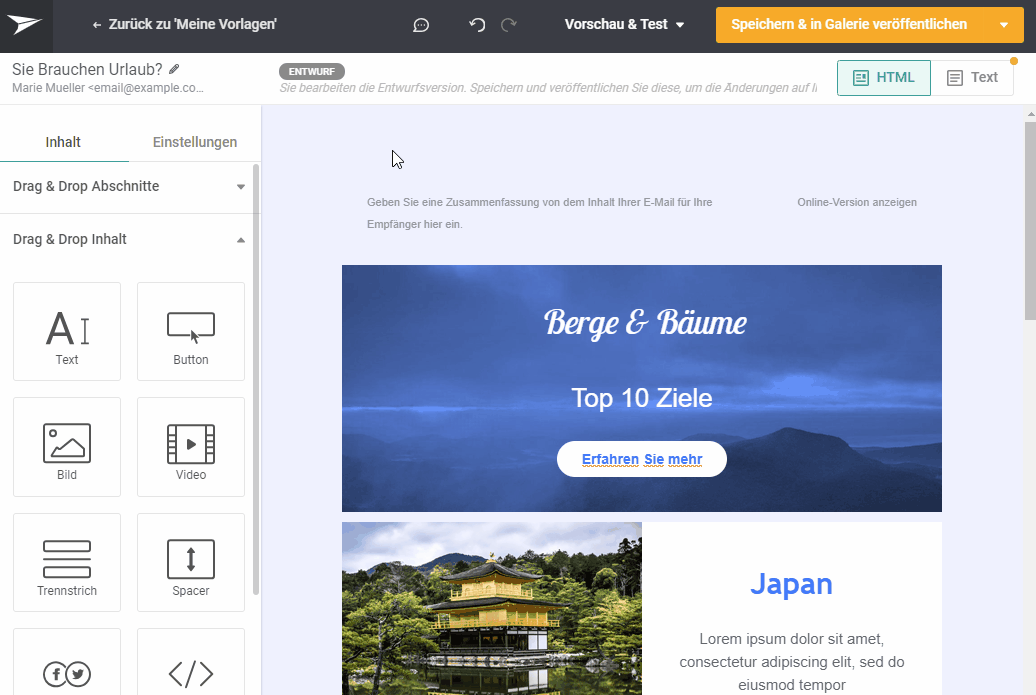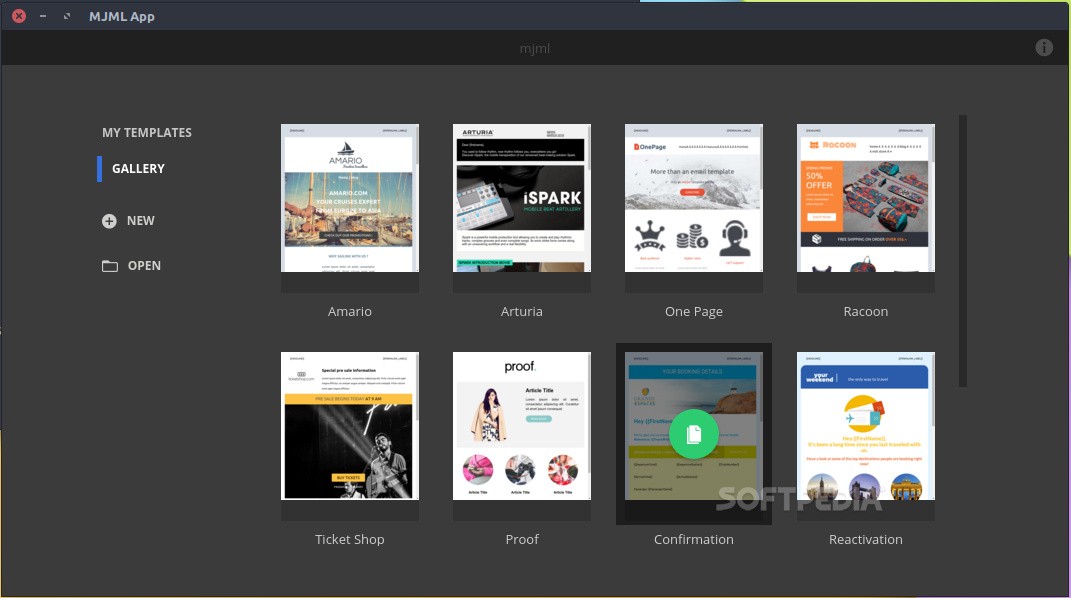
To make this happen in MJML, the tag once again comes to the rescue. That way, the email is accessible for screen reader usage, and crucial copy will show up even if the recipient has images turned off. For example, you may want live text overlayed on top of a graphic.

Overlapping content and MJMLĪnother technique that experienced email developers use regularly is overlapping elements in a design. But because she used display: block along with !important that overrides the inline setting.Īlso, notice that Nicole uses the tag above to add conditional statements in the MJML that hide mobile content from Outlook’s desktop clients for Windows.

When Nicole switches over to the parsed HTML, we see that the inline class is display: none. So, by applying the following code, she can tell email clients to show a certain image on desktop but not mobile: Nicole does this because GANGA (Gmail App with Non-Google Accounts) doesn’t support media queries, which are used for targeting different screen sizes. In the first grouping of styles, she includes anything that may need to be applied inline to the tag. For image swapping, that means she ends up doing something that may appear to be counterintuitive. Many times, you’ll want an image that’s one size for desktop viewing and a different size that’s optimized for mobile devices.īy the way, Nicole takes a “mobile first” approach to email development. Image swapping and MJMLĪnother question people have about more advanced MJML involves image swapping. But we’ll have to save all that for another episode. Watching the way other developers work is amazing! Nicole had me rethinking the way I target dark mode. Otherwise, it wouldn’t override the backgrounds on her tables, which means they would still show a light mode background. That’s why Nicole targeted table in her dark mode styles. When this gets parsed to HTML, the class goes into a, but the colors actually get applied to the first so that it appears in the cells of the table. Later, in an, you’d include the CSS class for the dark mode background:
#Mjml supported clients how to#
If you’ve seen any tutorials on how to code dark mode emails, you’ll recognize the meta tags that are used to let email clients know that your code offers both light and dark mode versions: When Nicole showed us how she creates emails with dark and light versions, she explained that a lot of it takes place up in the section. To put it another way, you’re not completely tied to the MJML framework when you use it to develop responsive emails. That’s what it was developed for.” Nicole Hickman, Direct Marketing Developer, Fishawack Health But if you have the need to do something that would be a little more cumbersome to try and do within the MJML itself, you can certainly bust out and just wrap things in. “There are a lot of things that MJML can do all by itself. Instead, you use it to code the same way you would in a normal HTML file. It is an ending tag that won’t include any MJML components. In the first installment of our exploration into MJML, you’ll recall how Nicole explained that components like text, buttons, and tables always get enclosed in and tags.

Basically, whenever she wants to code something for which there’s no simple solution with MJML markup, Nicole uses to include raw, responsive HTML.

The tag is what you’ll need when you have to “break out of the box” of MJML, as Nicole put it. When it comes to advanced MJML techniques and traditional HTML email development, there is a way you can get the best of both worlds.
#Mjml supported clients full#
(Visit our Resource Center to view the full transcription of this episode) Introducing the tag And don’t forget to subscribe to Email on Acid by Sinch on YouTube to catch new episodes of Notes from the Dev: Video Edition. But what happens when you need to take things a little further that the framework allows? Check out Nicole’s tips in the video below. Part of the beauty of MJML is its simplicity, as we saw in Part 1 of this interview. That includes dark mode, image swapping, and overlapping content in emails. I asked Nicole some of the most common questions that I’ve noticed email geeks wondering about the MJML framework. This time, we’re diving a little deeper to discover advanced MJML techniques. When we last left Nicole Hickman, she just finished showing us the basics of how to use MJML to quickly and efficiently code responsive HTML emails. But we are definitely excited to share the second half of this interview with you. Okay, so it wasn’t a huge cliffhanger or anything. It’s time for the exciting conclusion of our journey into one of the most popular email frameworks available: MJML (Mailjet Markup Language).


 0 kommentar(er)
0 kommentar(er)
